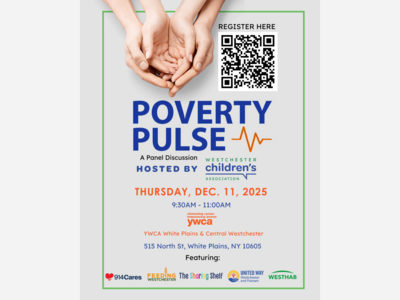Real Estate and Energy Experts Weigh In on Energy Guidelines and Costs for Non-Compliance
New York City’s Local Law 97, designed to reduce carbon emissions from larger buildings, was passed in 2019. The law sets a series of deadlines for which most buildings – including co-ops and condos – over 25,000 square feet must meet energy-efficiency and greenhouse gas emissions limits. But, while there’s been a lot of debate about the law, have owners and managers taken action to comply?
“There have been pushes for energy-efficiency ratings on residential properties for a while and they really didn’t get a lot of traction until a few years ago. Then, people started paying attention,” said Richard Haggerty, CEO of OneKey® MLS, the regional multiple listing service that covers the greater NYC area from Manhattan, to Suffolk, Westchester and Sullivan counties.
As the first deadline for compliance approaches Jan. 1, 2024, OneKey® MLS and the Hudson Gateway Association of Realtors, Inc. hosted a virtual panel, “The ABCs of Building Gradings and Impact of Non-Compliance,” featuring Bruce Cohen, partner, Cohen and Frankel, LLP; Peter Goldberg, strategy section manager, Con Edison; and April Royster, executive vice president, CitiQuiet Windows. The Nov. 9 event was moderated by Brian D. Tormey, NTP, president of TitleVest, a leading NYC-based provider of title insurance and related real estate services.
The panel explained Local Law 97 and similar rules, the grading system for residential and commercial buildings, ways to bring buildings up to code and fines for non-compliance.
“There are two local laws to pay attention to: Local Law 95 and Local Law 97,” said Goldberg, of Con Edison. “LL95 is there to make energy ‘visible.’ You walk past a building, you see the facade, the activity, but you don’t see the ‘energy.’”
Goldberg explained that LL95 requires most buildings over 25,000 square feet to post Energy Star ratings and associated “grades” in a conspicuous location near each public entrance. The ratings rank a building’s energy performance against that of similar buildings, in similar climates nationwide. Energy Star then provides percentile scores. So, if a building is more efficient than 85 percent of similar ones, it gets a score of 85 and an “A” grade. If it is more efficient than 70-84 percent, it gets a “B”; 55-69 percent, a “C”; and less than 55 percent, a “D”. “The only way to get an F, is to not submit your information,” Goldberg said.
Local Law 97, Goldberg said, brings the potential for fines. “Most buildings will have green-house gas emissions targets based on the property type and square footage,” he said. “The targets come into effect in 2024, but become much more stringent in 2030 and continually more stringent thereafter. If you exceed the target, you pay a fine. The fine is $268 per ton of CO2 that you are over your limit.”
For real estate attorney Cohen, it’s prudent that brokers be aware of the regulations and also know what their potential buyer’s or seller’s building is doing to get into compliance.
“A ‘D’ is not a kiss of death,” said Cohen. “The biggest concern for me is, what are they doing about it now, so that in 2030 when the punitive fines begin they are not affected? It’s really a building by building issue, and you have to take it into consideration when you’re doing your due diligence. The more prepared the broker is when they’re getting a listing or representing someone purchasing, the more this could be handled up front. Otherwise, it could end up killing the deal at the last second, or a purchaser could end up with an unexpected and large expense.”
For co-ops, “getting the board involved is the best thing you can do,” said Royster, of CitiQuiet, which makes and installs ‘Soundproof Window Systems’. “We as vendors are spending a lot of time educating clients, anyone who will listen, about what’s coming up, especially in that 2030 timeframe. Most buildings will be OK until 2030 – that is when they’re going to start feeling the pain of either not doing anything or not doing enough.”
The panel discussed strategies for compliance – including reducing usage of natural gas and electricity, and installing systems like special windows and heat pumps – and taking advantage of available incentives.
“The great part about incentives is you’re being rewarded for making improvements you want to do anyway,” said Royster. “Con Ed is making sure you’re being incentivized to do that. So beyond avoiding the fines, you’re getting dollars back … the more you do and the more energy you’re saving, the more Con Ed is willing to give you.”
For information about resources and incentives, visit accelerator.nyc and nyserda.ny.gov.
View the webinar here: https://www.youtube.com/watch?v=2U_GpQlyIE0
The webinar is part of the “Be Your Best” series created by HGAR and OneKey® MLS, to help Realtors and agents navigate a changing landscape.
About OneKey® MLS
OneKey® MLS is one of the nation’s leading multiple listing services, serving more than 48,000 Realtor subscribers and 4,500 participating offices throughout Manhattan, Westchester, Putnam, Rockland, Sullivan, Orange, Nassau, Suffolk, Queens, Brooklyn, and the Bronx. It was formed in 2018 by the Hudson Gateway Association of Realtors and the Long Island Board of Realtors.
About Hudson Gateway Association of Realtors®
The Hudson Gateway Association of Realtors (www.hgar.com) is a not-for-profit trade association representing more than 14,000 real estate professionals in Manhattan, the Bronx, Westchester, Putnam, Rockland and Orange counties. It is the second-largest Realtor association in New York, and one of the largest in the U.S.
PHOTO CAPTION: The Hudson Gateway Association of Realtors, Inc. and OneKey® MLS hosted “The ABCs of Building Gradings and Impact of Non-Compliance” Nov. 9, 2023. Pictured (clockwise from top): Bruce Cohen, partner, Cohen and Frankel; Brian D. Tormey, NTP, president, TitleVest; Peter Goldberg, strategy section manager, Con Edison; April Royster, executive vice president, CitiQuiet Windows; and
Richard Haggerty, CEO of OneKey® MLS.














